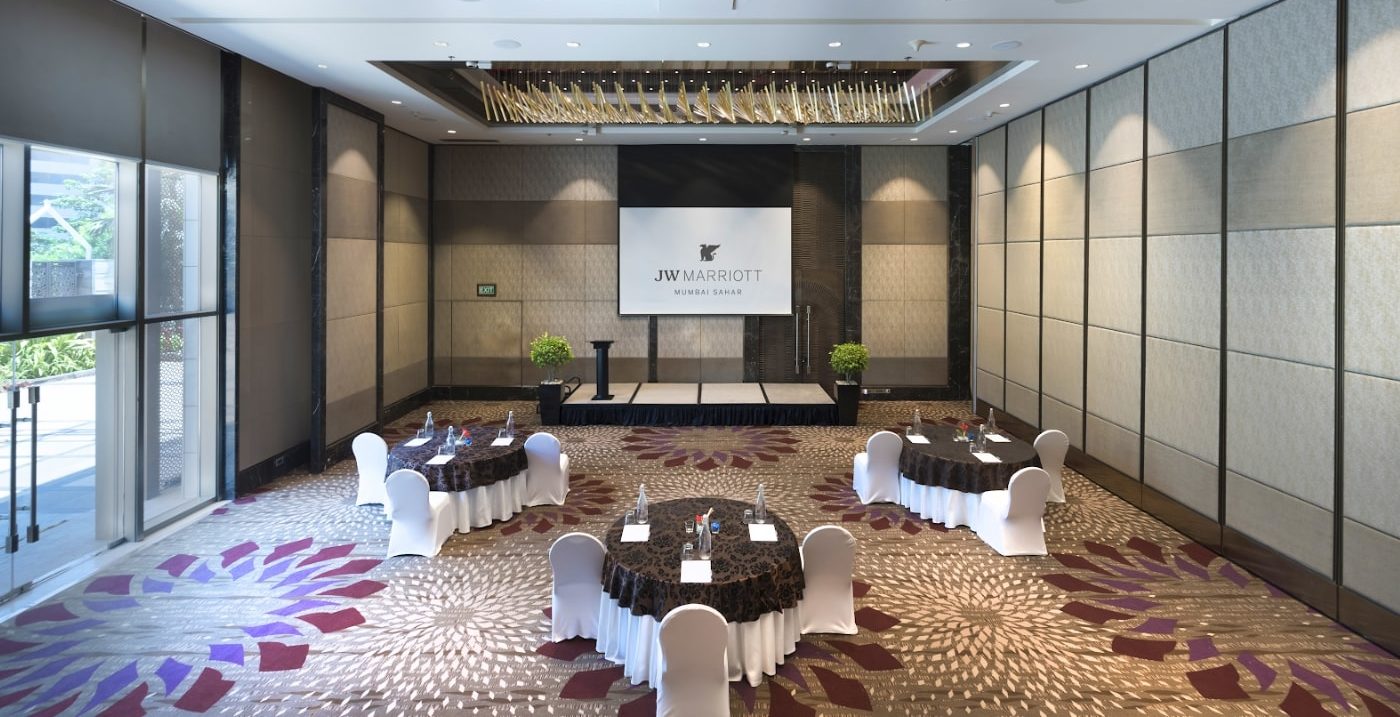Connect Beyond the Screen: Considerations When Planning a Live Streaming Event
 JW Marriott Mumbai Sahar
JW Marriott Mumbai Sahar
While event organizers around the world are putting live events and large conferences on hold as a way to protect their communities, many are exploring less risky alternatives that will allow them to deliver valuable event experiences that continue to cultivate human connections.
One popular alternative is by having live streaming events. Live streaming events can reduce event cost and carbon footprint since most participating guests do not have to physically travel to the event. It allows event organizers to cater to a large audience while limiting social contact between individuals. Here are five factors to consider that will help boost engagement and optimize the benefits of live streaming events when on a limited budget or when travel is not feasible.
1. Who is meeting face-to-face and who is going online?
Live streaming events tend to require significant resources and attention to detail to make sure they run smoothly. Having blackouts, internet problems, background noises, or delayed start times in the event reflects negatively on the organizer’s reputation. Meeting in a controlled physical location can help to avoid some of these problems. Most hotels are equipped with the necessary technology and have experienced stand-by staff. Consider hosting a live streaming event where only the speakers, event partners, and sponsors meet and network in person while the audience is online. By having the event collaborators meet offline, companies are able to gain more control regarding the event schedule while facilitating networking opportunities and building commercial partnerships that bolster support for the company and future events.
2. Keep your attendees engaged
One of the biggest challenges of running live streaming events is keeping your guests engaged and focused. Since the event is not confined to a physical venue, participants can get easily distracted. Even if guests are logged on, they may not be fully present because they may be busy looking at the phones, checking their emails, or just doing something else at the same time. Turn the attendees into active listeners by having moderators facilitate online discussion, live polls, or Q&A sessions so that everyone can get involved in the conversation.
Even through a screen, online audiences can detect and feel the vibe of the live sessions. Hosting the live sessions in a hotel can create the perfect ambiance and atmosphere for live and online audiences. Having onsite staff dedicated to the virtual attendees can help address any event needs quickly and make sure that the whole event runs according to plan.
3. Leverage the power of technology
One of the most significant benefits of live streaming events is the unique technological features available. Other than the essential live streaming audiovisual equipment, there are a lot of other useful technologies that event planners can take advantage of. Incorporate gamification engagement modules like badges and leaderboards into the live streaming event to evoke friendly competition and foster a sense of achievement in participants. Guests can then become more mentally invested and have a memorable experience. Organizers can think about including a live social media feed during the session so that attendees can participate in real-time. The opportunities with technology are endless.
4. Find an optimal session time
Keep the length of meeting time to an absolute minimum, as suggested by the World Economic Forum, for productive and efficient meetings. The exact time frame and duration will depend on the nature of the meeting. The most popular webinar or conference sessions, according to WorkCast, tend to be 30 minutes to an hour-long. Internal meetings with global teams, however, may just need a concise 15 minutes to fulfill their meeting goals. In contrast, networking events may schedule 90-minute sessions so that individuals can properly interact with each other and facilitate meaningful conversation virtually. When setting up the time for the meeting, be sure to keep in mind the different time zones that you are catering to.
5. Make the content available online after the event
Consider putting the content of your event up online afterward. Recordings of a large-scale event or conference can be utilized for marketing purposes. Organizers can share it as part of the promotion for future events while participants can rewatch their favorite keynote session and share the inspiring seminar, creating great word-of-mouth for the event. Event planners can also think about sending out a post-event questionnaire asking what attendees would like to see or hear to help them plan for their next live streaming event.
Live streaming gives us the opportunity to break geographical barriers and connect with others when we have to limit social contact, travel, or event expenses. Host your next live streaming event at Marriott, where our commitment to cleanliness, experience in bringing people together, and offerings of meeting technologies, venues, and services facilitate a seamless event experience. We look forward to welcoming you.

